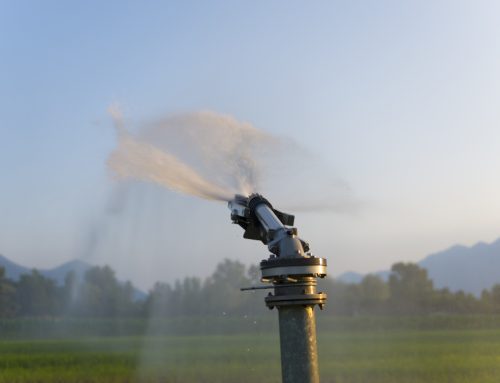With the spring temperatures almost near (if not already here), it is time to tune up your sprinkler systems. Don’t know how?
Don’t worry; the tips in this article will guide you on how to prepare your sprinklers for spring.
However, you should understand that caring for your home irrigation system shouldn’t stop after spring.
To save time and money in the long run and get the most from your sprinklers, you need a regular maintenance service.
That said, shall we turn up your sprinklers for spring? Follow these tips if you’re ready!
Confirm That Your Lawn Is Frost-free
You don’t want to start your sprinkler when there is still frost beneath your lawn. Doing so might lead to complications.
So before you start anything or even power your sprinkler system, check the soil. Mind you: don’t do a surface check. You might not see anything. Instead, follow these steps:
- Get a shovel.
- Dig beneath your lawn to a depth of about 12inches.
- Check if there is no frost in the soil.
- Even if there is no frost, check the texture of the soil.
- If the soil is hardened, it is not yet time to start your sprinkler system. Else, you can move to the next care tip.
Check The Settings On The Controllers
After confirming that your soil is free from the effects of winter, check your sprinkler system controls.
Specifically, check the date, time, and timer on your sprinkler. Ensure that the parameters match the current weather. Even better, reset the whole control.
Afterward, set new schedules based on your lawn water requirement. You can ascertain that by feeling and observing the lawn up close.
Lastly, check the backup battery in the controller. As a rule, do the checkup at least every six months, regardless of the season. That is how you manage the minor issues affecting your controllers before they escalate.
Check And Remove Flow Obstructions
Despite your sprinkler controllers functioning appropriately, you can still experience obstructions in water flow. When that happens, follow these steps:
- First, clear the entire setup of cobwebs and dirt.
- Next, carefully inspect your spray heads. Is there debris in the components? How about dead matters like leaves or remains of insects?
- After your inspection, ensure you clear out all the obstructions.
If, after clearing the obstruction in the sprinkler spray head, you still experience improper water distribution, inspect the system again! This time, unbury the buried sprinkler heads and thoroughly clean them.
But what if, despite all the cleaning, your sprinkler system doesn’t distribute water as it should? The next tip can help!
Check And Replace Damaged Sprinkler Heads

If your clean sprinkler system malfunctions still, the chances are that its parts are either broken or worn out. So, check and replace such parts.
While you’re at it, fix the damaged sprinkler heads as soon as you find them. Else, they can skyrocket your water bills and dent your beautiful lawn.
Note: sprinkler heads and nozzles are susceptible to cracks. So, ensure you regularly check that they are in perfect condition. If possible, maintain a monthly or bimonthly schedule for the checkup.
In addition to your sprinkler heads and nozzles, inspect your valves. Here is why:
Valves are just as critical to proper water distribution for your lawns as your sprinkler heads. So, ensure you appropriate a similar routine here too.
Particularly, look out for leaky valves. They intend to cause patches in your lawns.
Lastly, and most importantly, close all manual drain valves before starting your irrigation system. By doing so, you’ll reduce water wastage, conserve your money, and save your lawns.
Further reading: Why Does Your Sprinkler Leak?
Stop Water Hammer
Water Hammer happens when you open a valve that hasn’t been used for a while. It is a powerful surge of water that often indicates the presence of a busted sprinkler valve.
To effectively stop water hammers, employ experts in home irrigation systems like Sprinklrite. Better still, take time to invest in an appropriate water pressure gauge.
Using a water pressure gauge, you will fill your sprinkler safely. That way, you will reduce the instances of water hammers and broken valves.
Ultimately, you will need an expert to check your home irrigation system. Get a spring turn-on service and return your lawn to its beautiful form!








Leave A Comment